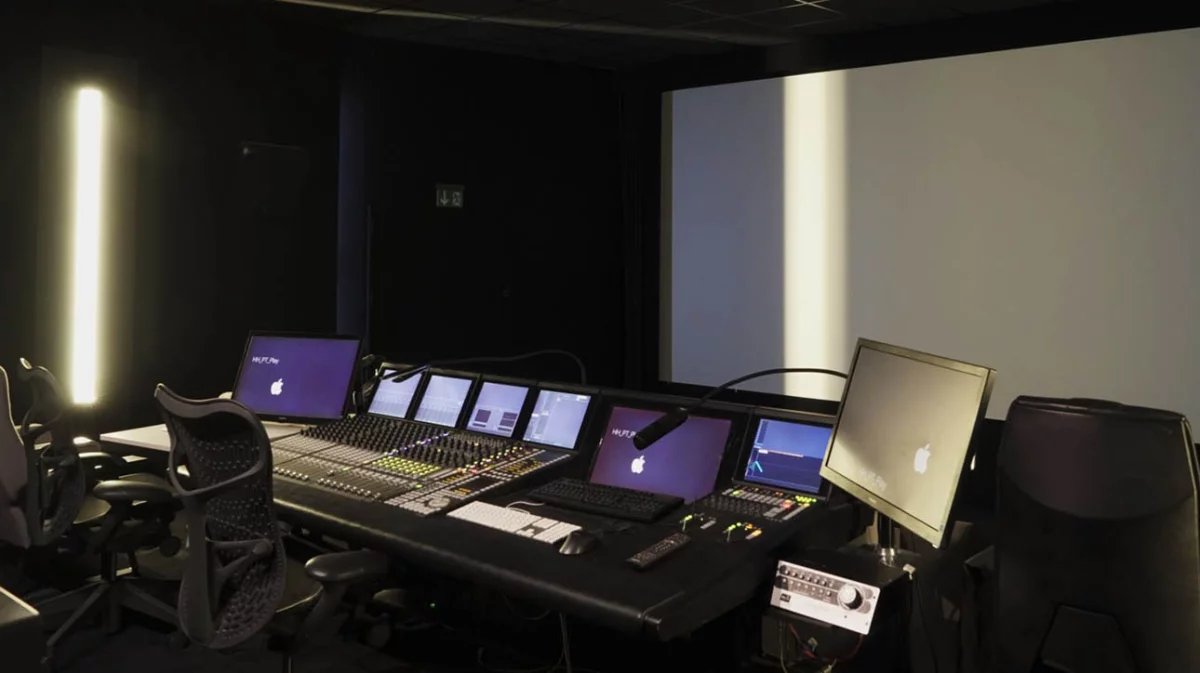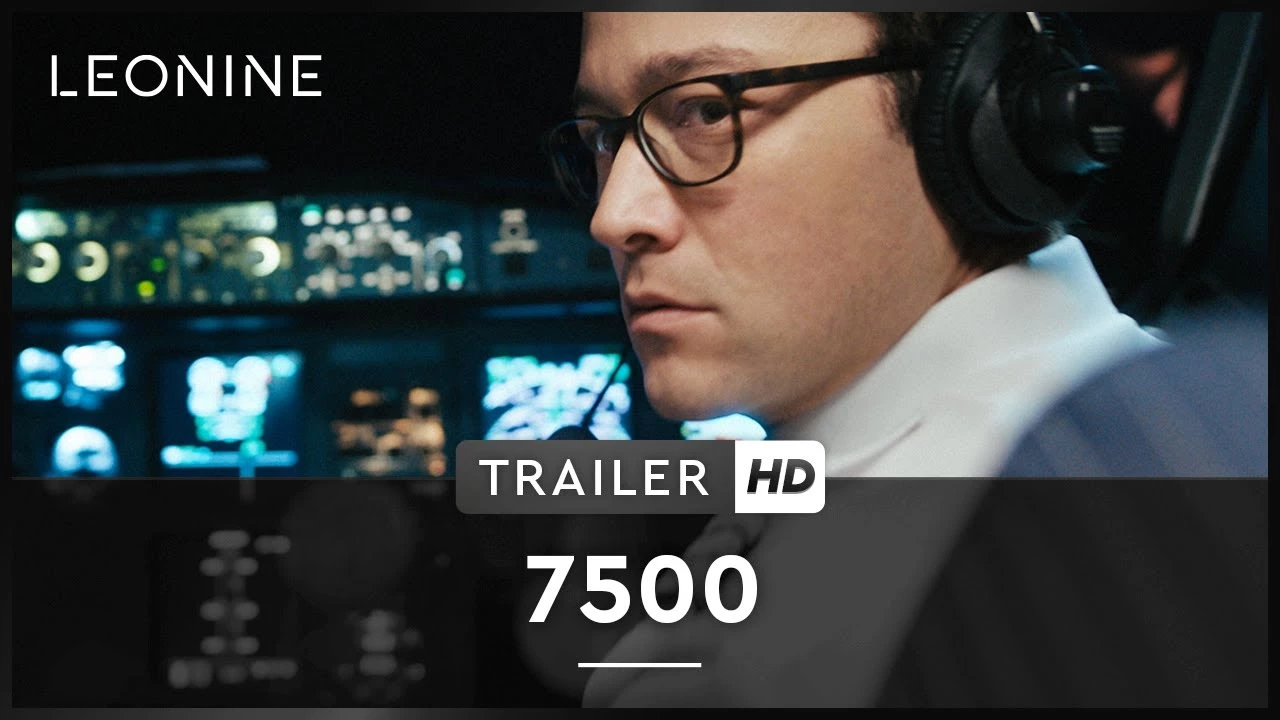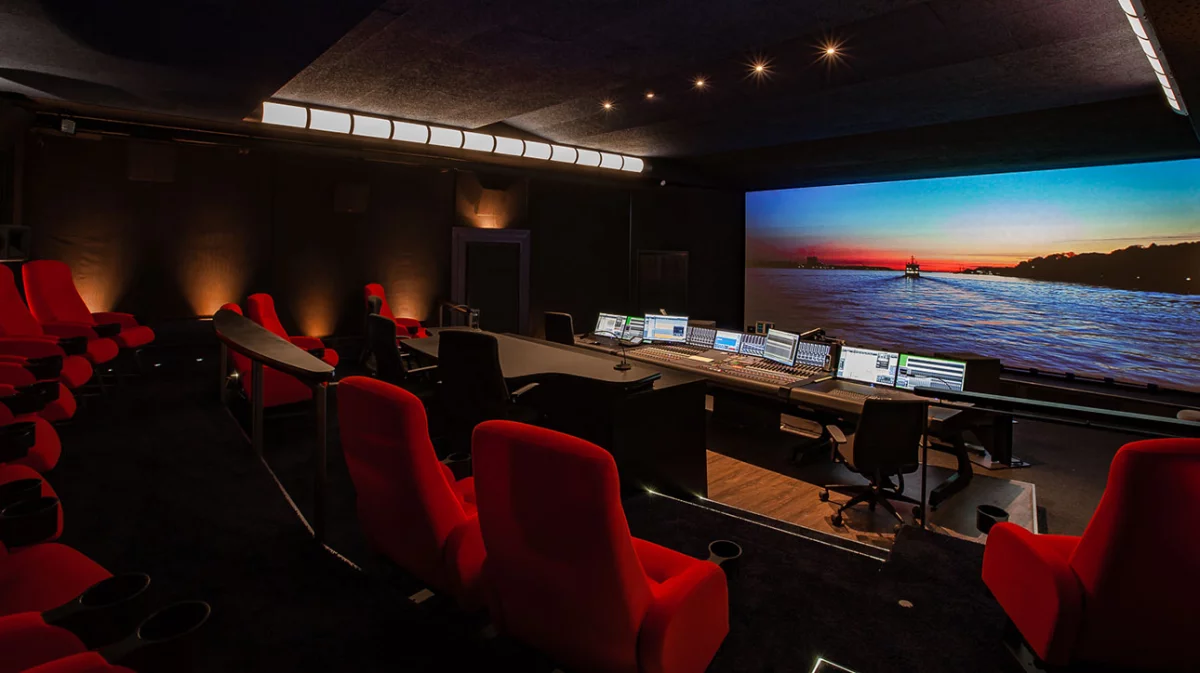Turn up the volume!
29.04.2021 | Audio post production at Film-Norden

They make sure that dialogue in films is clear and understandable, that explosions really pack a punch - and that rain actually sounds like rain: sound designers and sound mixers in the field of audio post-production. We spoke to seven studios in Hamburg and Schleswig-Holstein to find out where they specialise and why their work is indispensable for films and series.
"We have a table tennis table outside where we often meet in the afternoons. So that we can see the daylight from time to time," says Yannick Rehder and laughs. As a mixing engineer, he spends most of his day in dark, shielded rooms. But he can't imagine a better job. Together with Tobias Farshim, he has been managing theTonic Studio in Hamburg. This is where the German mix of the successful Netflix series Stranger Things is created, among other things, and where the sound of the Tatortreiniger gets its first and final polish. "With Schotty, for example, our job involves acoustically emphasising the humour of the individual scenes, such as the squeaking of his shoes at very inappropriate times," reveals Rehder. Tonik Studio offers a wide range of services for different requirements, from voice recordings and sound design to Dolby Atmos mixing.

Just a few streets away are theLoft Studioswho are responsible for the sound production of Fatih Akin's "The Golden Glove" and Özgür Yildirim's "Nur Gott kann mich richten" as well as the dubbing voice recordings for Moritz Bleibtreu's directorial debut "Cortex": "For Cortex, we did the post-sync recordings with Moritz Bleibtreu. It was a great job, as Moritz is very professional, but always remains creative during the recordings and tries to get the best out of a take," says film sound engineer and CEO Sascha Heiny. Like many of his colleagues at Loft Studios, Heiny came to technology via the music in a band: "At some point in the 80s/90s, I realised that I enjoyed setting up the sound system more than my band colleagues. Since then, I wanted to become a Sound Designers," reveals the Osnabrück native. After training at the SAE, he did an internship at Loft in 1995 - and has been CEO since 2003. The Loft Studios headquarters are located in Hamburg Bahrenfeld, with further studios and partners in Hamburg Winterhude, Berlin, Bremen and Frankfurt.

If you don't come from a sound background, the various technical terms can be a little confusing. Sascha Heiny uses the range of services offered by Loft Studios to describe what the terms mean.
Dialogue editing (= original sound editing): Editing the original sound from the set. This is primarily about dialogue and speech intelligibility, but also about sounds such as the actors' footsteps, original background noises (=atmo) or special sounds of objects visible in the picture (doors, cars, dishes...). In the case of "edits" within a scene, no sound jumps should be audible, every word/syllable should be understandable, speech and sounds must be synchronised with the image.
Sound design (=sound design): Sound design serves to create the acoustic atmosphere of a film. We can create moods, make locations seem gloomy or friendly, village or metropolitan, loud or quiet and much more. Sounds have to fulfil or even exceed the viewer's expectations, for example with large machines, heavy doors or extreme close-ups. As a rule, several sounds are layered for this purpose. The same goes for the atmosphere: when it rains, one rain sound is not enough - we want to hear the rain on the umbrella of the main characters, on the tin roof under which the protagonists are standing and in the gutter, which may get a close-up.
Voice recordings (dubbing and voice over): Post-synchronisation is unfortunately necessary if the sound from the set has become less than ideal or even unusable due to technical events. Sometimes narrator voices are needed for the story, and occasionally the content of the spoken text is changed, e.g. to correct dates or names that were different during filming.
Mixing (for TV + cinema): in the mix, all elements (dialogue, sounds, dubbing, music) are brought together to create the sound of the film. Which sound dominates? Which sounds move in the room? Music is faded in and out, sounds are alienated, timbres are changed (lowering or emphasising different frequencies), the dialogue is given spaces and possibly mixed with the image in terms of perspective.
Stephan Konken is almost a veteran of the Hamburg recording studio scene.Konken Studios from Ottensen. Founded in the early 80s, the studios have been at their current location in "Große Brunnenstraße" since 1988. And over the years, many cult films have passed through its mixing desk: Whether "The German Chainsaw Massacre" by Christoph Schlingensief, the children's film Käpt'n Blaubär or the Oscar-nominated "Mongol" from 2007. "For Mongol, we developed our own headsets for horses back then and made the recordings in a paddock in Schleswig-Holstein. The recordings in the relevant audio libraries were simply not sufficient for our purposes," says Konken.

Since the very beginning, co-productions have been his hobbyhorse, such as the multi-award-winning Turkish-German co-production "Sibel": "The film is about a girl who communicates using a whistling language. The main actress had to whistle many of the whistle takes again in post production. Those were crazy recording days," reveals Konken, who did all the sound design for Sibel. He is currently working on an Indonesian project for Fatih Akin's production company bombero international. So his work continues to take him around the globe (at least digitally).

The fact that Hamburg Ottensen is a real meeting point for first-class post production in the field of sound is also proven byThe Post Republic in Gaussstrasse. From small co-productions to material with a star cast, cinema films and series are given the right tone here. "Our ratio of national to international productions is around 50/50. We come from the cinema world, but the number of requests from the streaming segment is increasing significantly," reveals in-house Segment Producer Christoph Hars.

The aircraft hostage drama "7500" starring Joseph Gordon-Levitt has just been released in cinemas and can now be seen on Amazon Prime. The team spent around three months working on the dialogue editing and sound design. "The film takes place almost the entire time in a cockpit that initially sounded like cardboard. So we had to help out a bit here in post production. We do a lot in-house, but for some jobs - such as the foley artist - we bring in specialists from outside," says Hars. Most recently, the Hamburg team worked on the ZDF series "Tod von Freunden", for which The Post Republic handled the entire post production together with Lüneburg sound studio Chausseefilm. "That's one of our strengths: We can offer not only the sound post production, but also the complete image area. So the customer gets everything from a single source," says Hars.

Another player in the Hamburg sound business isStudio Funkwhich, with a total of 32 recording studios, is also represented in Berlin, Düsseldorf and Frankfurt in addition to the Hanseatic city and has provided the right sound for a wide range of genres, from the biopic "Lindenberg! Mach dein Ding" to the animated film "Bayala", they have already provided a wide variety of genres with the right sound. What is it actually like to work on an animated film? "A particular challenge for our team was to create an acoustic world from scratch for every character and every location. Be it the menace of the high mountains in the snowstorm, the Gewalten of the stormy sea, the carefree nature of the young elves or the evil of their antagonist," reveals Managing Director Markus Weber.

A great deal is therefore possible at the sound level - and it is more important than many cinema-goers might think: "Viewers are much more forgiving of irritations in the image than in the sound. An incomprehensible dialogue immediately distracts from the story, whereas a blurred image rarely does. In addition, the sound can evoke emotions in the viewer that the image cannot. Just imagine a horror film without sound effects. Sound is an important part of the dramaturgical message of a film," says Weber.

So there's plenty of sound power in Hamburg, but Schleswig-Holstein can also boast a studio or two. It offersearworx in Kiel offers a whole range of services for cinema, TV and advertising, from sound design to multilingual mixing. Stefan Schumacher's studio has now been in existence for over 30 years and has realised numerous NDR productions as well as cinema films during this time. If you are an up-and-coming filmmaker or need help with sound and music for small productions, you can contact theCliffstudioand owner Roger Wahlmann in Böklund, who has built his workplace in a former swimming pool in the countryside.


Incidentally, all studios have noticed a decline in productions due to coronavirus, although not always directly in 2020: "We were lucky last year, as many of our productions had just finished filming when the lockdown began. We saw the sharpest decline in spring 2021. A lot has now been pushed into the second half of the year - there will most likely be a lot to do then," says Yannick Rehder. Fittingly, the team of three is currently looking for reinforcements at the mixing desk, but as is currently the case in many other trades in film, there is a lack of young talent. We're keeping our fingers crossed that someone will be found anyway - then nothing will stand in the way of doubles at the table tennis table for a quick vitamin D top-up.






